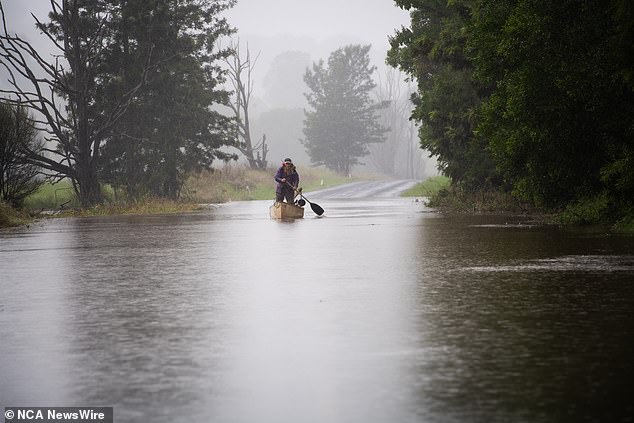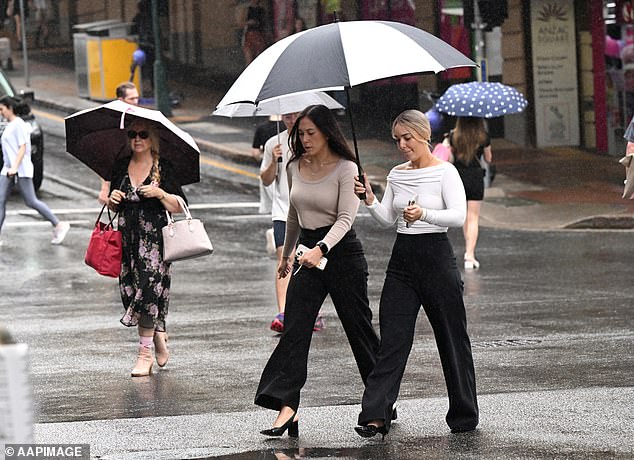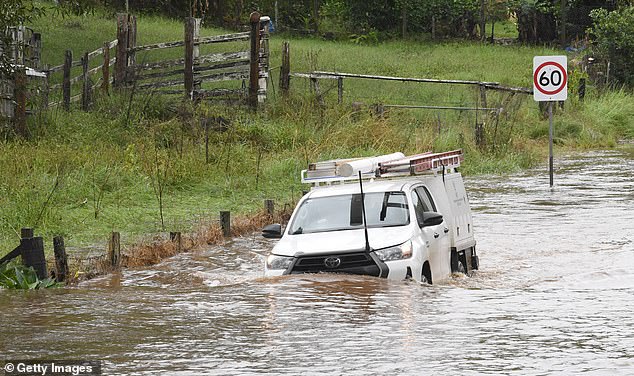<!–
<!–
<!– <!–
<!–
<!–
<!–
All New South Wales residents have been told not to leave their homes unless their travel is “necessary” as extreme weather wreaks havoc across the east coast.
Sydney’s trains, roads and airport are in chaos as authorities struggle to deal with what is being called a “rain bomb”.
Two major weather systems have merged, bringing up to 300mm of rain from the southeast. queensland to the New South Wales south coast on Friday.
He A rare weather phenomenon, known as Black Easter, plunged some areas into darkness in the middle of the day.
The Bureau of Meteorology (BoM) said much of the New South Wales east coast will receive extreme rainfall and is at risk of flash flooding overnight on Friday.

All New South Wales residents have been told not to leave their homes unless their travel is “necessary” as extreme weather wreaks havoc across the east coast. Lismore is pictured on Friday.


People are seen as it rains in Brisbane’s CBD, Friday, April 5, 2024.
“Our severe weather warning at the moment covers a large area of eastern and southern New South Wales, stretching from around Newcastle in the Hunter area to Bega on the south coast,” said senior meteorologist Angus Hines.
That includes “the entire Sydney metropolitan area, the Illawarra area and the Central Tablelands area”.
NSW SES Commissioner Carleen York said the wild weather across the state made driving dangerous and advised residents to stay home.
“I ask people, if it’s not a necessary trip, to postpone it for another day,” he said.
More than 550 people have asked the SES for help in the last 24 hours and seven flood rescues have been carried out since Monday.
In a post on Observe and act.’
Chipping Norton is a southwestern suburb of Sydney, 27 kilometers from the CBD.
The rain is so heavy that the Warragamba Dam, which supplies most of Sydney’s water, is expected to overflow on Monday morning.


A vehicle attempts to navigate flood waters in the town of Tintenbar on April 4, 2024 in Byron Bay, Australia.
Although the wet weather will ease on Sunday, the dam is already at 96 percent capacity.
It only takes 90mm of rain to spill, and forecasters predict 150mm is on the way.
“The important thing about this is that the spill will probably occur when the rains have passed, so it is very important that the community remains alert,” Water NSW chief executive Andrew George told reporters on Friday.
More to come…
